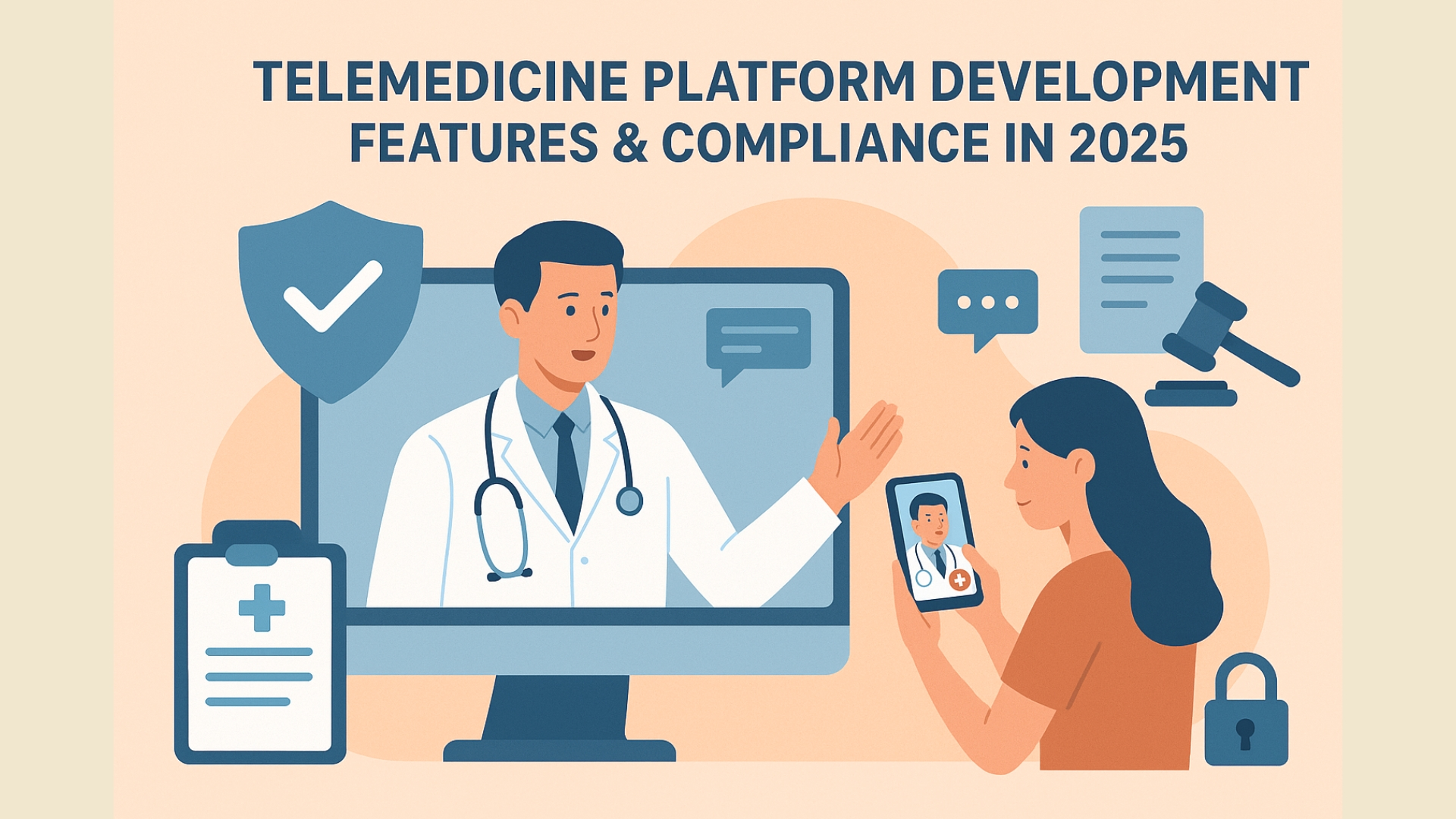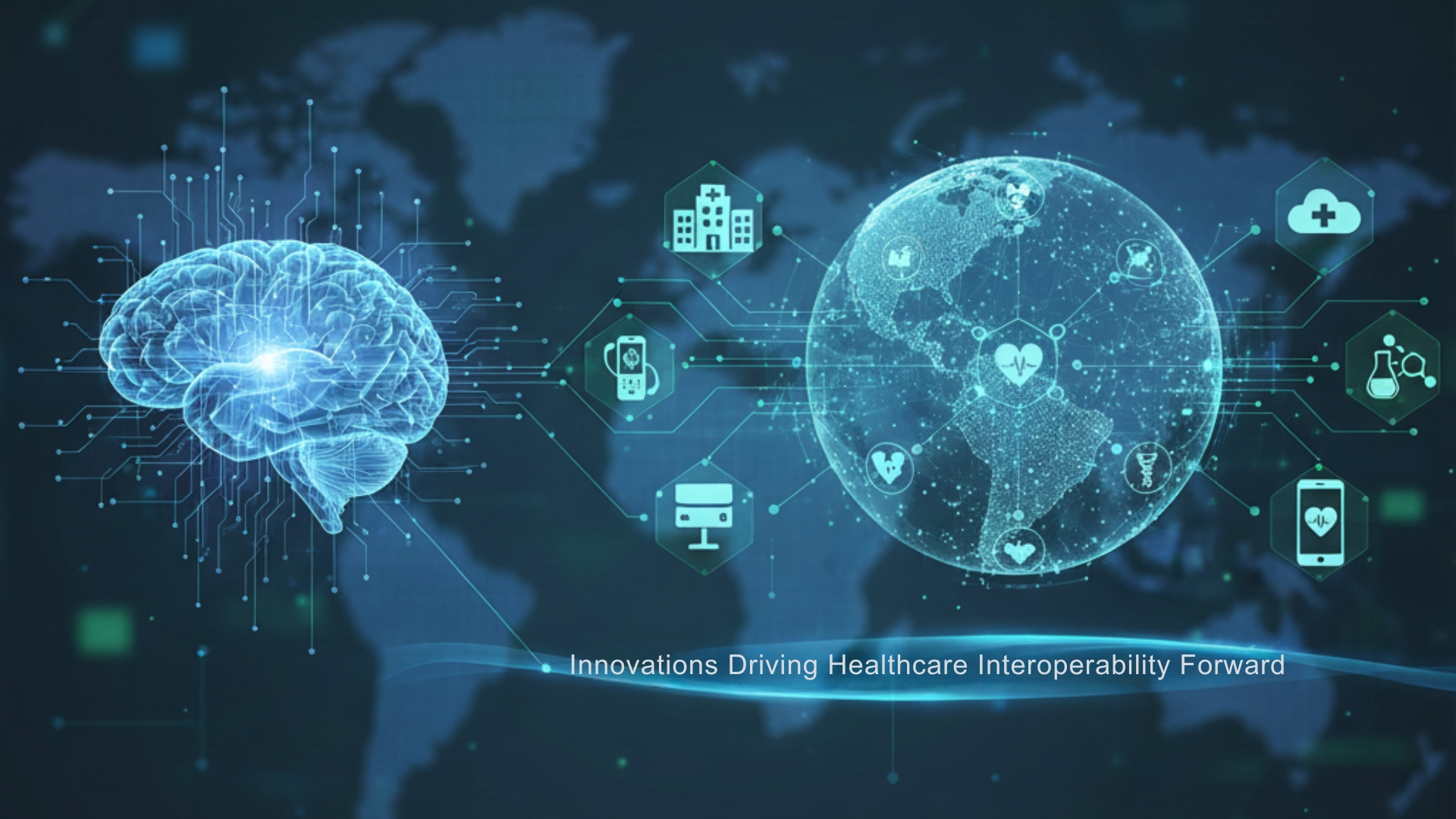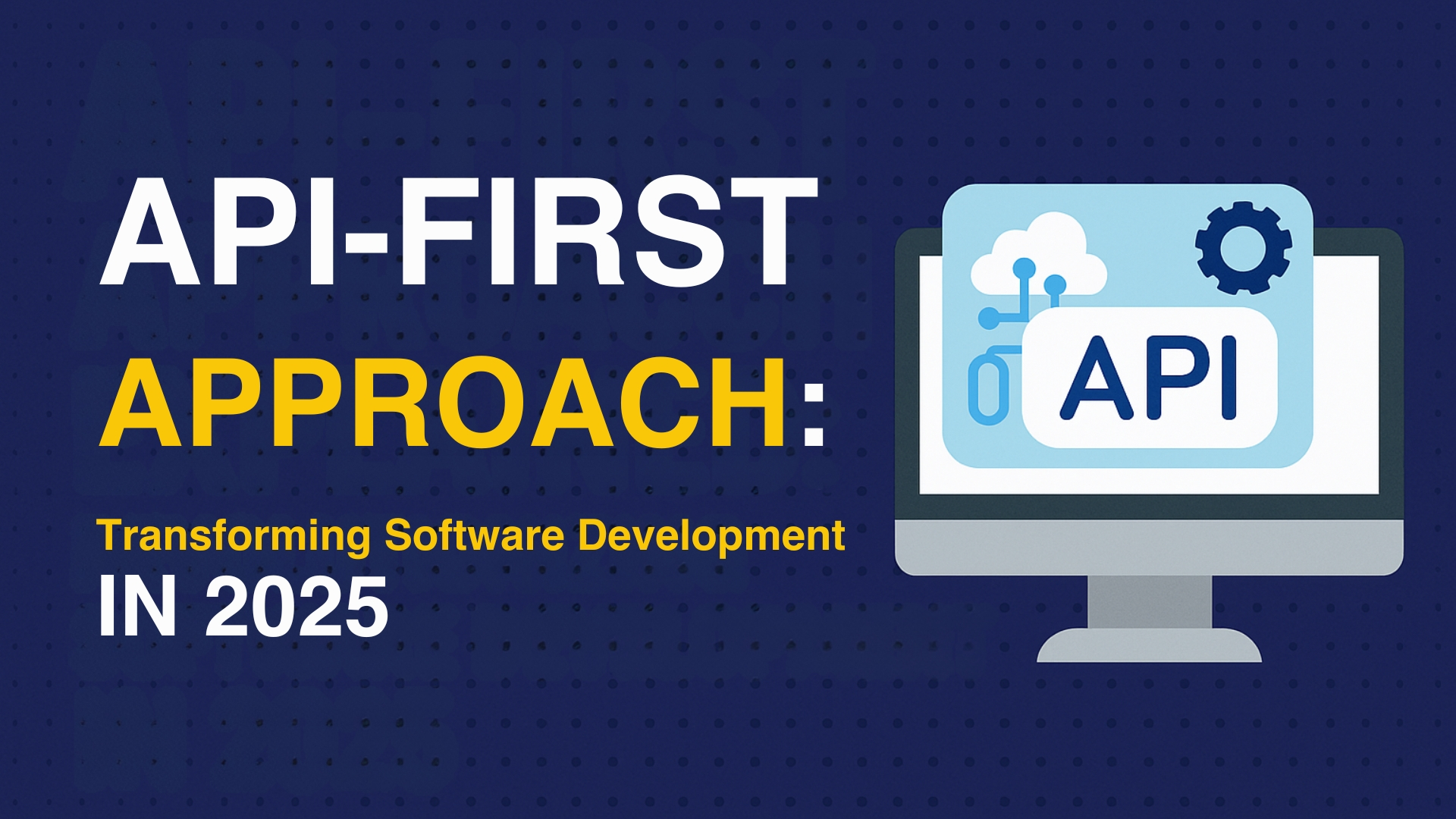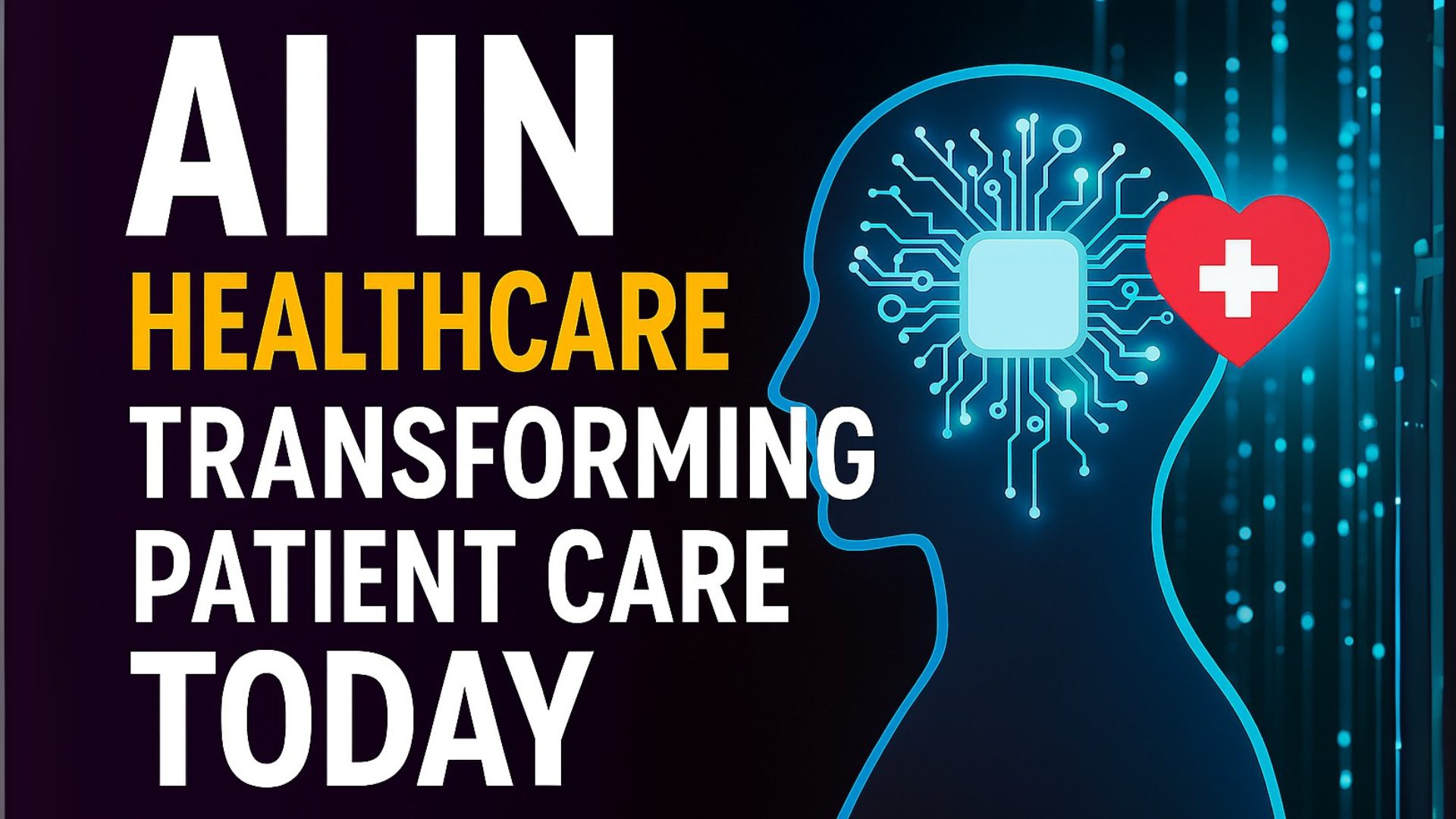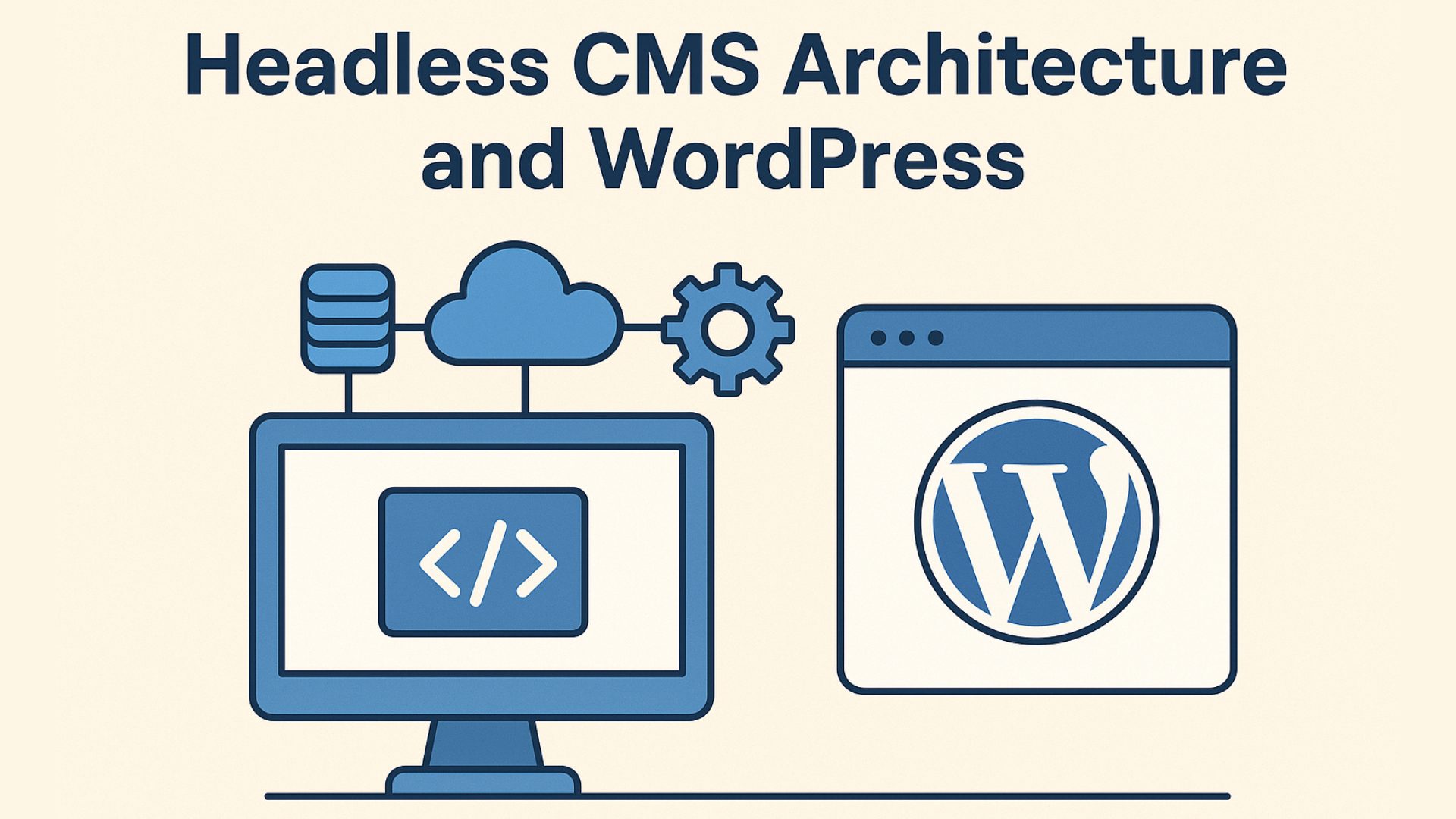Why Telemedicine Matters in 2025
Telemedicine is no longer a niche healthcare solution—it has become a cornerstone of modern healthcare delivery. In 2025, more patients than ever rely on digital consultations, remote monitoring, and AI-driven healthcare tools to receive timely medical support. Hospitals, startups, and even solo practitioners are investing in virtual healthcare platforms to provide care beyond geographical limits.
The global telemedicine market is projected to surpass $225 billion by 2025, driven by increased smartphone penetration, AI advancements, and the need for cost-effective healthcare. Yet, developing a telemedicine platform isn’t as simple as creating a video conferencing app. It requires strict adherence to healthcare compliance standards, robust data security, and a set of advanced telemedicine software features that enhance both patient and doctor experiences.
This article explains everything you need to know about telemedicine platform development in 2025, from the must-have features to compliance regulations. It’s designed to be fully self-contained—answering all your questions so you don’t need to leave the page to find clarity.
What Is a Telemedicine Platform in 2025?
A telemedicine platform is a digital healthcare system that enables patients and providers to connect virtually for consultations, follow-ups, prescriptions, and health monitoring. While early versions of telemedicine were limited to simple video calls, modern platforms integrate AI-driven diagnostics, EHR interoperability, IoT wearables, and secure payment systems.
In 2025, virtual healthcare platforms are evolving into end-to-end healthcare ecosystems, allowing patients to:
- Book appointments instantly.
- Share medical history and lab reports.
- Access AI symptom checkers for preliminary screening.
- Receive e-prescriptions that sync with pharmacies.
- Engage in secure video/audio consultations.
- Get post-care reminders through mobile apps.
For healthcare providers, these platforms streamline operations with automated scheduling, digital health records, billing modules, and compliance dashboards.
Why Telemedicine Platform Development Is Essential for Healthcare Providers
Developing a telemedicine platform is not just about adopting new technology—it’s about future-proofing healthcare services. In 2025, patients will demand transparency, ease of use, and accessibility. Without telemedicine integration, providers risk losing relevance and patient trust.
Telemedicine also addresses critical industry challenges:
- Accessibility: Rural areas with limited healthcare facilities can access specialists remotely.
- Cost-effectiveness: Hospitals reduce overhead costs, while patients save on travel expenses.
- Chronic care management: Continuous monitoring via wearables reduces hospital readmissions.
- Pandemic readiness: Telemedicine ensures healthcare continuity in emergencies.
By investing in custom telemedicine platform development, healthcare providers not only improve patient care but also create scalable business models that thrive in a digital-first world.
What Are the Core Features of a Telemedicine Platform in 2025?
It takes more than just integrating a video chat feature to create a telemedicine platform. The following telemedicine software features are non-negotiable in order to satisfy user expectations and legal requirements:
1. Secure User Authentication
Patients and doctors need verified logins with multi-factor authentication to prevent unauthorized access. In 2025, biometric logins such as fingerprint or facial recognition are increasingly popular for healthcare apps.
2. AI-Powered Symptom Checkers
Artificial Intelligence now supports predictive healthcare models. Patients can input symptoms, and the system suggests possible conditions before connecting them to a doctor, helping optimize physician time.
3. High-Quality Video & Audio Consultation
Real-time, HD-quality video ensures doctors can observe patient symptoms effectively. Platforms must also support low-bandwidth connections to serve patients in rural areas.
4. Electronic Health Record (EHR) Integration
Telemedicine platforms must connect seamlessly with EHR systems to provide a holistic view of a patient’s history, prescriptions, and diagnostic results.
5. Digital Prescription & Pharmacy Integration
In 2025, most telemedicine platforms provide direct pharmacy connections, allowing doctors to send e-prescriptions instantly.
6. Remote Patient Monitoring (RPM)
IoT devices such as wearables, glucose monitors, and smartwatches feed data directly into the platform, allowing continuous monitoring of chronic patients.
7. Payment & Insurance Processing
Integrated payment gateways and insurance claim management streamline billing for both patients and providers.
8. Multilingual & Accessibility Features
To serve diverse populations, telemedicine platforms in 2025 must offer multi-language support, closed captions, and screen reader compatibility.
9. AI Chatbots for 24/7 Support
AI-powered chatbots evaluate non-emergency cases, send patients to the appropriate medical expert, and instantly respond to frequently asked questions.
10. Compliance & Security Features
HIPAA, GDPR, and other global standards require end-to-end encryption, audit trails, and data anonymization to safeguard sensitive health data.
How to Ensure Compliance in Telemedicine Platform Development
One of the most important considerations when developing a telemedicine platform is compliance. Heavy fines, legal action, and harm to one’s reputation might result from noncompliance.
A HIPAA compliant telemedicine platform in 2025 ensures secure handling of protected health information (PHI) through encrypted communications, audit logs, and strict access controls. Alongside HIPAA, providers must also meet GDPR, PIPEDA, and other international standards.
HIPAA (U.S.)
Safe management of protected health information (PHI) is required by the Health Insurance Portability and Accountability Act. In 2025, HIPAA compliance extends to cloud storage providers and AI-driven healthcare apps.
GDPR (Europe)
Strict patient data privacy is guaranteed throughout the EU by the General Data Protection Regulation. Telemedicine platforms must implement consent-based data collection, right-to-access policies, and encryption standards.
PIPEDA (Canada)
Healthcare providers must uphold transparency in the use and storage of data in accordance with the Personal Information Protection and Electronic Documents Act.
Other Global Regulations
- NHS Digital Standards (UK) demand secure NHS-approved systems.
- PDPA (Singapore) focuses on safeguarding patient consent and cross-border data transfers.
- India’s DISHA Bill regulates digital health data usage and storage.
Platform developers need to incorporate compliance-first architecture, which includes:
- Encrypted communication channels (TLS 1.3 and beyond).
- Role-based access control (RBAC) for healthcare staff.
- Regular security audits and vulnerability testing.
- Data residency compliance, ensuring storage within local jurisdictions.
Step-by-Step Guide: How to Develop a Telemedicine Platform in 2025
Developing a telemedicine platform involves multiple stages, from ideation to deployment.
Step 1: Define Business Model & Use Case
Decide whether you’re building for hospitals, clinics, mental health services, or multi-specialty platforms. Each use case demands unique features.
Step 2: Regulatory Planning
Identify compliance requirements early to avoid redevelopment costs. Consult legal experts in healthcare law before starting development.
Step 3: UI/UX Design
Healthcare apps must be intuitive and accessible. A patient with no tech experience should be able to book an appointment within 3 clicks.
Step 4: Technology Stack Selection
Choose frameworks that support scalability and real-time communication. By 2025, telemedicine development will be dominated by cloud-native architectures, WebRTC, GraphQL, and AI APIs.
Step 5: Core Development
Develop the backend for security and scalability while integrating APIs for payments, EHR, and AI diagnostics. Build mobile-first applications since 70% of telemedicine traffic comes from smartphones.
Step 6: Testing & Security Audits
Conduct penetration testing, HIPAA audits, and usability tests before launch. Check if accessibility standards like WCAG 2.2 are being followed.
Step 7: Deployment & Continuous Monitoring
Deploy on secure HIPAA-compliant cloud servers such as AWS HealthLake or Microsoft Azure for Healthcare. Put in place real-time monitoring for patient data security and uptime.
Future Trends in Telemedicine Platform Development
The telemedicine industry is advancing rapidly, with several trends shaping the future of virtual healthcare platforms:
- AI-driven personalized care: AI algorithms predict health risks based on patient history and wearable data.
- Blockchain in healthcare: Used for tamper-proof medical records and secure patient consent management.
- Virtual Reality (VR) therapy: Mental health platforms integrate VR for exposure therapy and stress relief.
- Voice-enabled consultations: Patients use smart speakers to schedule appointments and receive basic health advice.
- 5G-powered telemedicine: Faster connectivity ensures real-time imaging and remote surgeries.
These innovations make telemedicine platforms more advanced, reliable, and accessible, ensuring continued adoption beyond 2025.
Challenges in Telemedicine Platform Development
Despite its promise, telemedicine comes with challenges:
- Regulatory complexity: Different countries impose unique compliance rules, complicating global rollouts.
- Risks to data security: Since the healthcare industry is a prime target for hackers, encryption and monitoring are essential.
- User adoption barriers: Elderly patients may resist using new technologies, requiring patient education modules.
- Integration with legacy systems: Many hospitals still use outdated EHRs, making interoperability difficult.
By addressing these challenges proactively, developers can ensure long-term success for their telemedicine solutions.
Conclusion
Telemedicine is already the norm for care in the future; it is no longer an alternative. Developing a HIPAA compliant telemedicine platform in 2025 requires balancing technology, compliance, security, and user experience.
By integrating advanced telemedicine software features such as AI diagnostics, remote monitoring, and EHR interoperability, healthcare providers can deliver safe, accessible, and scalable care.
Organizations that invest in telemedicine platform development today will be best positioned to thrive in the digital-first healthcare ecosystem of tomorrow.
FAQ’s
How much does it cost to develop a telemedicine platform in 2025?
The cost typically ranges from $100,000 to $500,000, depending on features, compliance needs, and integrations such as EHR systems or AI modules.
What is the duration required to create a telemedicine platform?
On average, development takes 6–12 months, including design, compliance planning, coding, and testing. Advanced features like IoT integration may extend timelines.
Which technologies work best for developing telemedicine apps?
On average, development takes 6–12 months, including design, compliance planning, coding, and testing. Advanced features like IoT integration may extend timelines.
Is telemedicine here to stay after 2025?
Indeed. Telemedicine is becoming a permanent component of healthcare due to the integration of AI, 5G, and IoT. It’s expected to dominate primary care, chronic disease management, and mental health services well beyond 2025.

